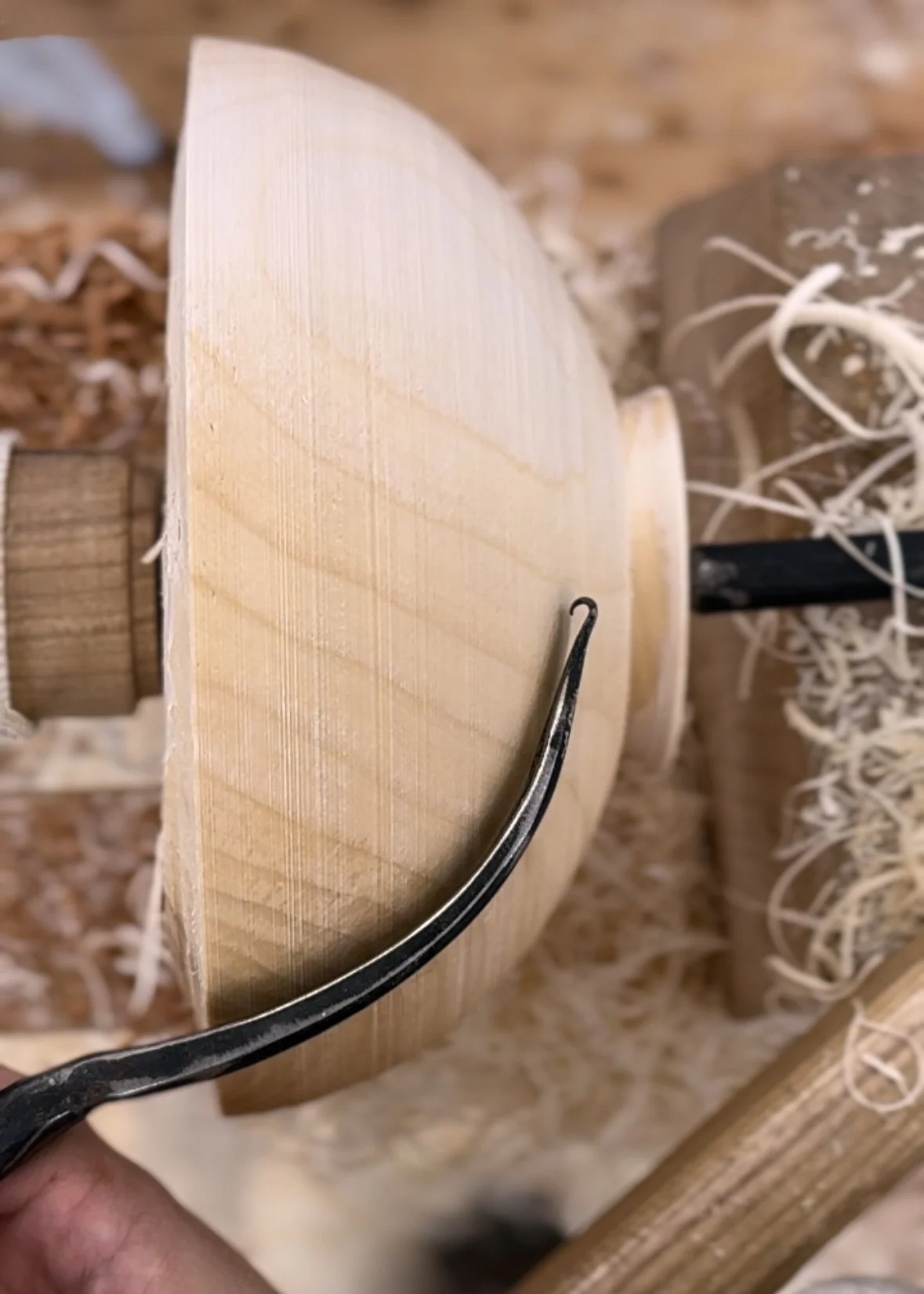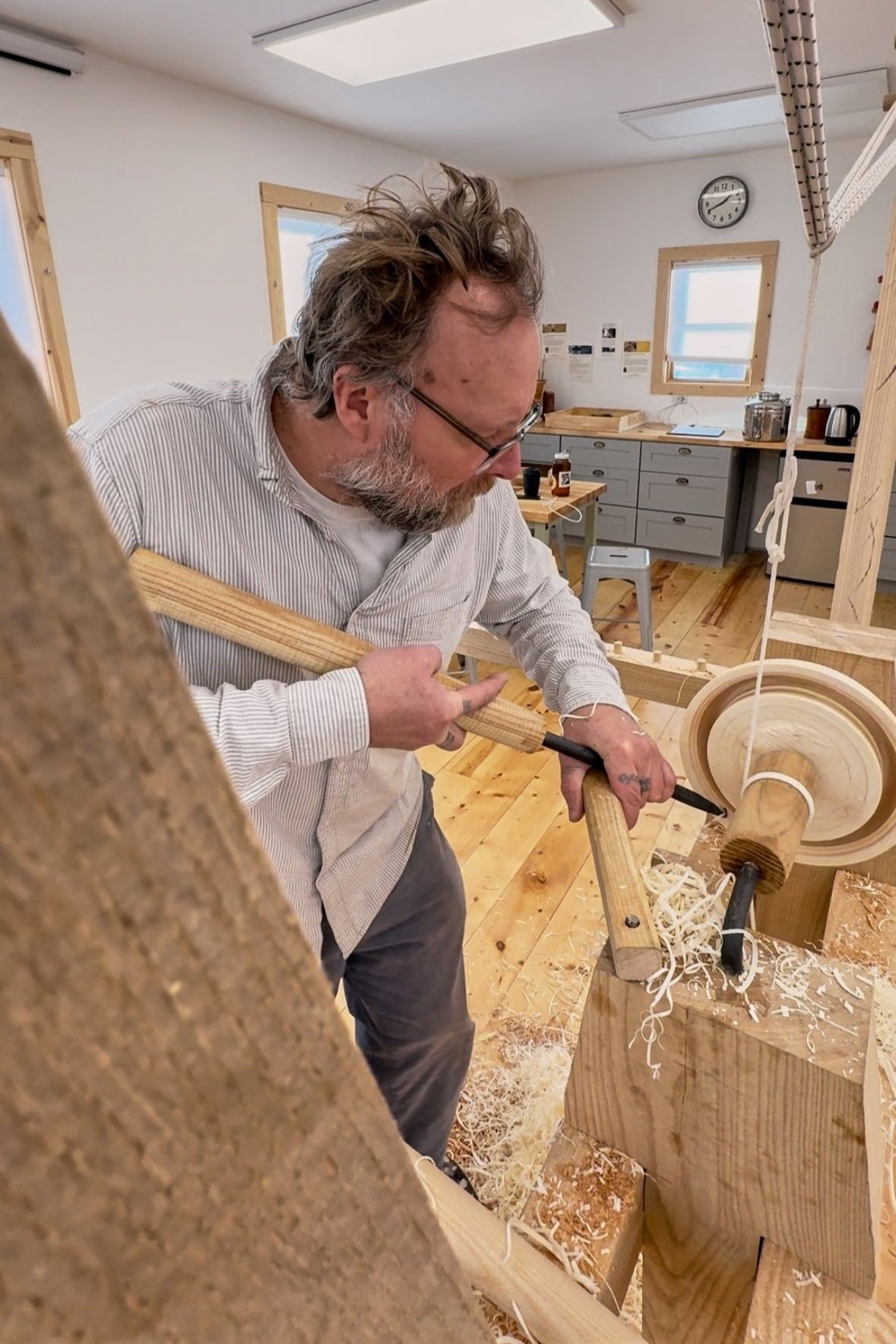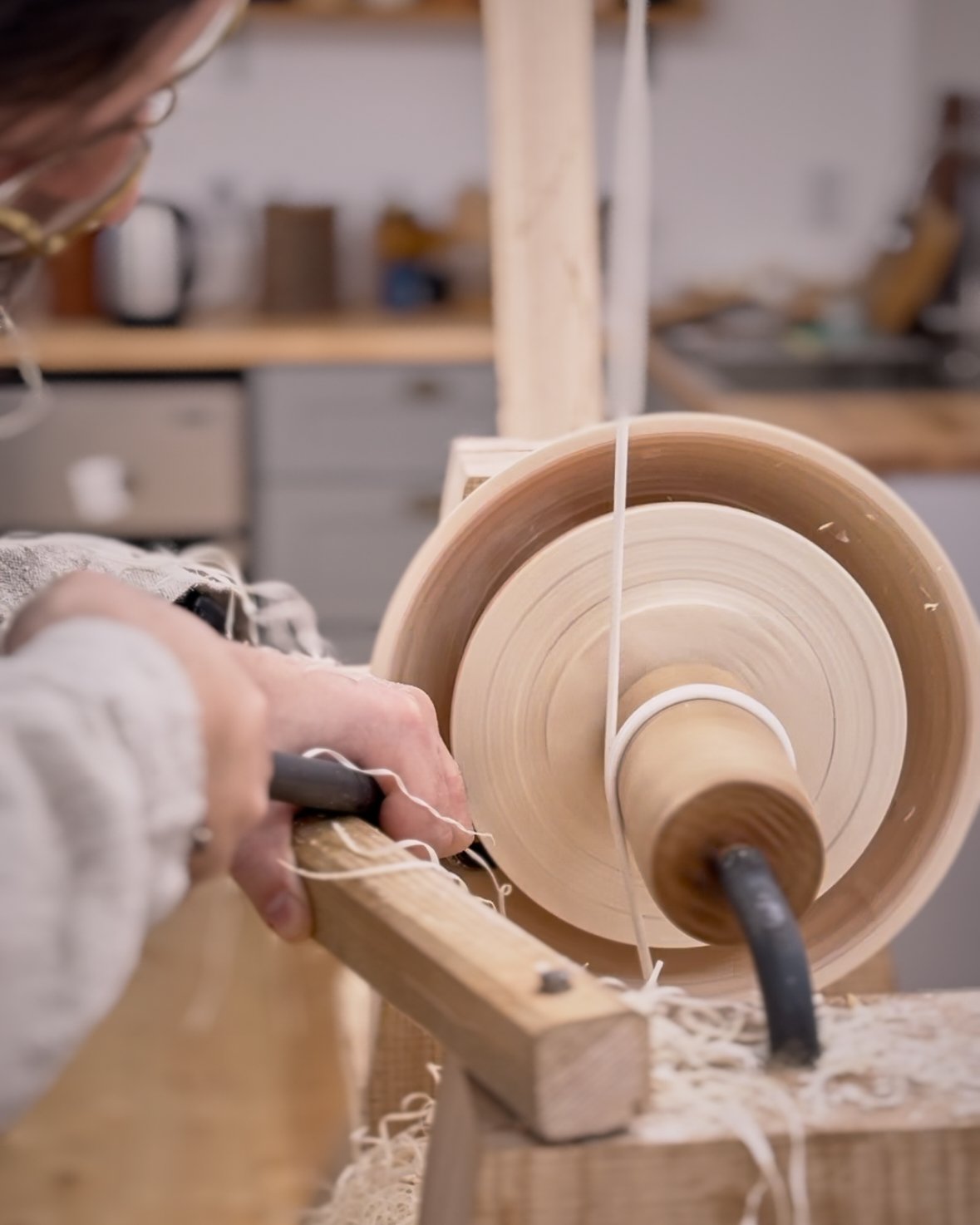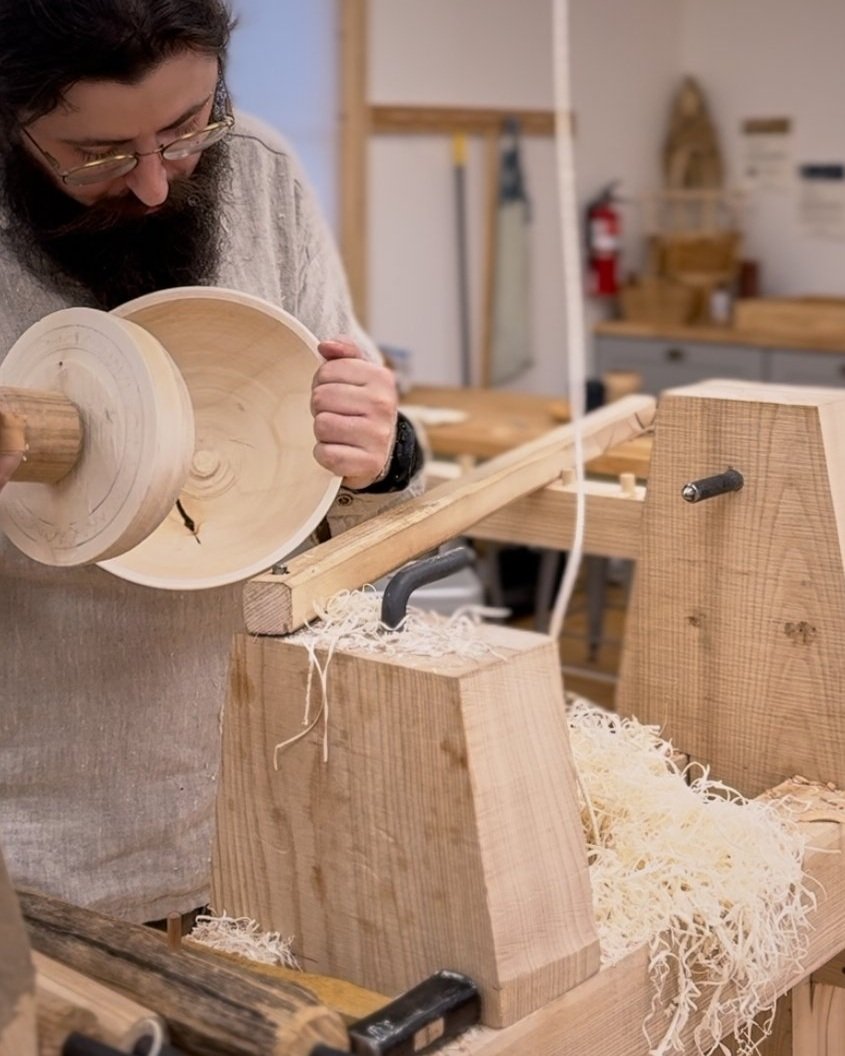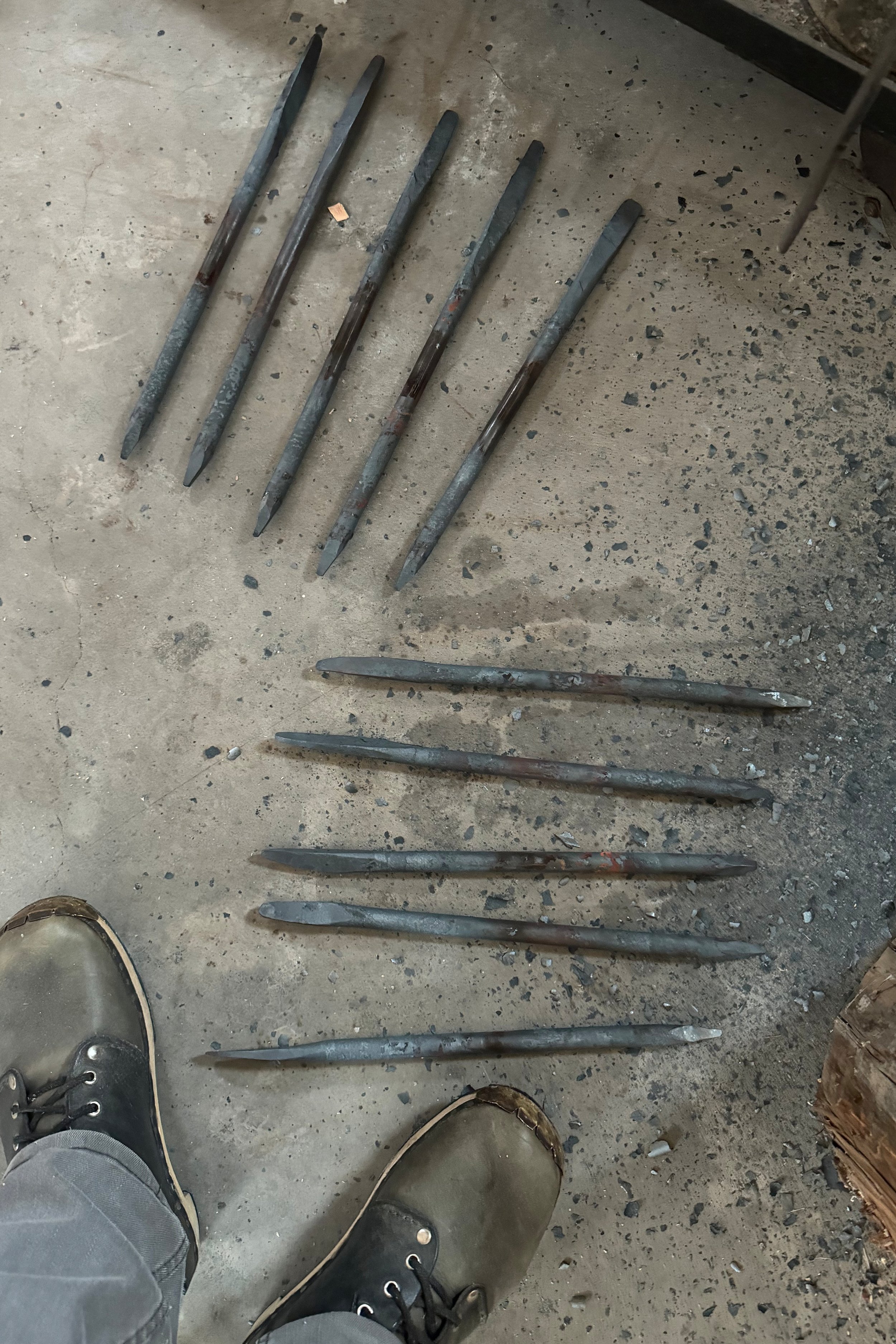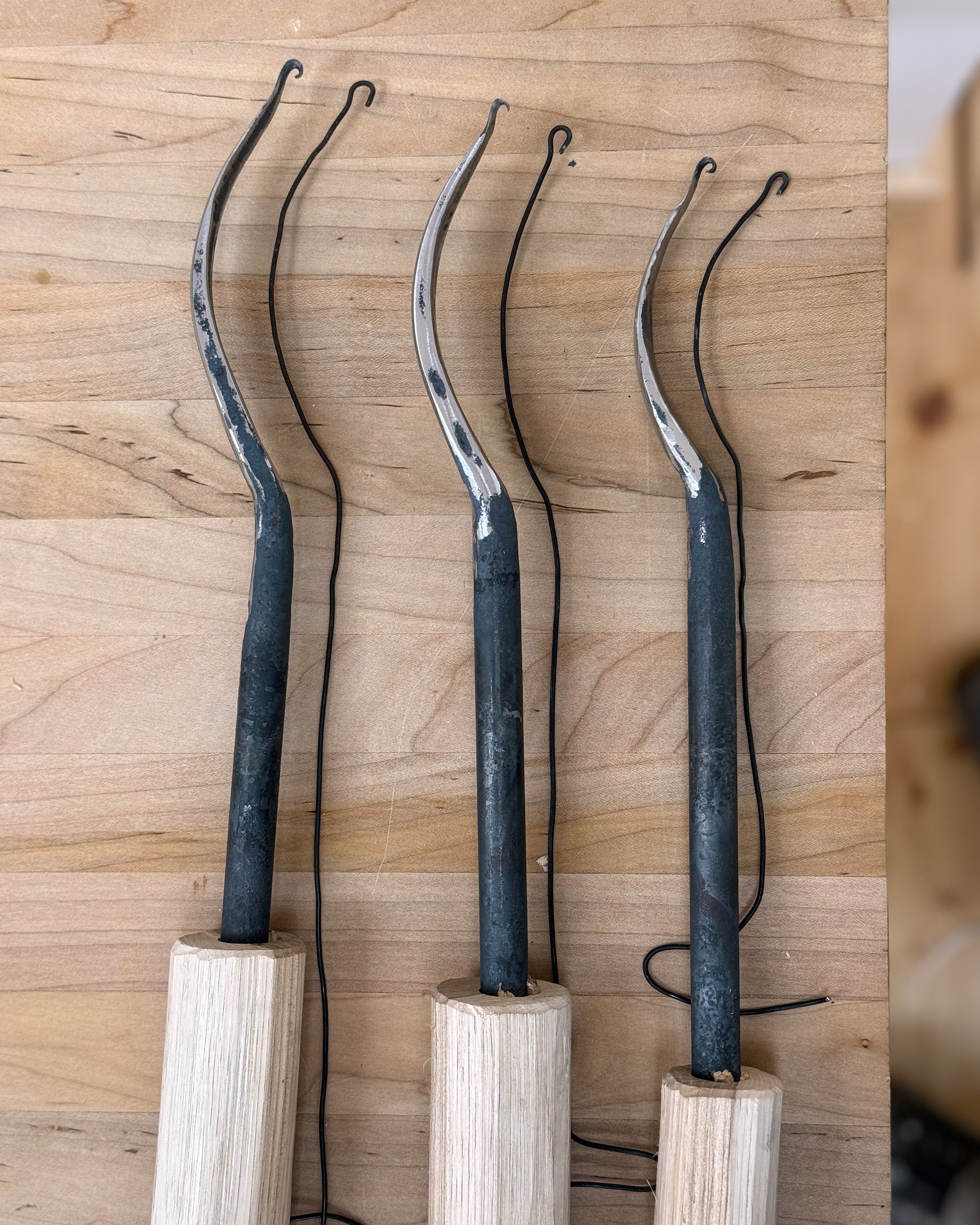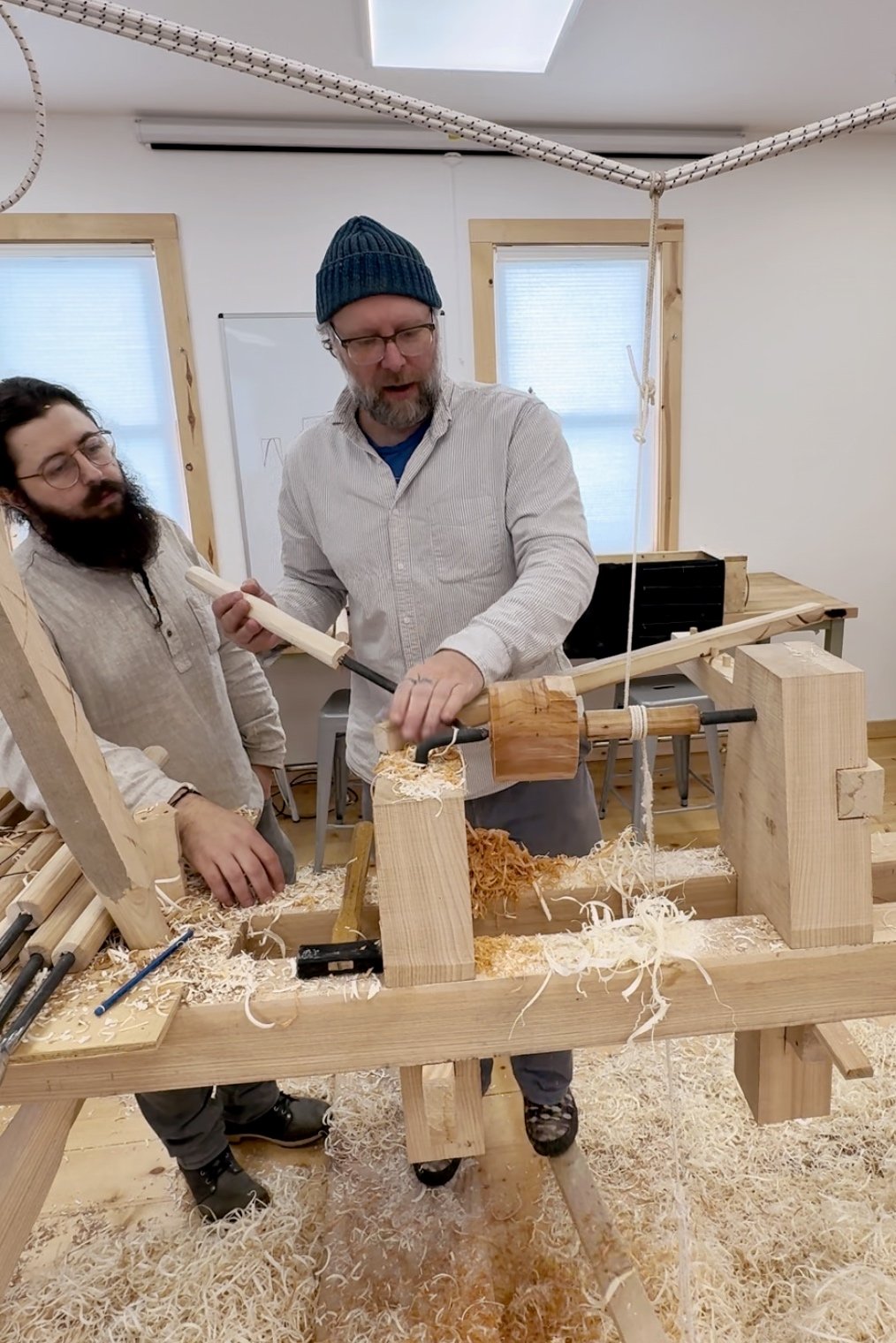ASF Fellowship - Skill Development Week1
Jarrod and I standing at a pole lathe with the results of my physical efforts from week 1.
Summary - I completed week one of two pole lathe skill development sessions with Jarrod Dahl at the Woodspirit School of Traditional Craft. We focused on nesting bowls, tool making, and lidded boxes. This project is funded by The American Scandinavian Foundation through an Artist Fellowship.
I returned recently from my first of two 5-day sessions studying pole lathe turning with Jarrod Dahl, one of the leading pole lathe turners in the world, at the Woodspirit School of Traditional Craft in Ashland WI. Apprenticing with Jarrod is one of three phases of a project I’m working on this year funded by The American Scandinavian Foundation through an Artist Fellowship.
Jazmin Hicks-Dahl and her husband Jarrod recently founded the Woodspirit School where they coordinate an array of courses and events that empower people to acquire new skills, refine existing ones, express their creativity, and connect with natural materials through traditional handcraft.
Speaking of learning, let’s get into some of the massive amount learning that occurred over the first week. I'll keep it concise, and if time permits, I may provide more detailed information in later blog entries.
Day 1:
Jarrod and I discussed our goals for the apprenticeship and promptly began turning. We decided to prioritize nesting bowls right away. Nesting is an advanced wood turning technique used to craft multiple bowls from a single piece of wood. This skill has eluded me for years. Jarrod had me start with a warm-up bowl to familiarize myself with his tools and lathe. I chose to turn an ale bowl shape. After finishing the exterior, we practiced core cutting techniques for nesting on the interior. I made so many practice cuts that I ended up with a very unusual core. This exercise gave me a little bit of experience in sensing good nesting hooks cuts, emphasizing sound and feel. Typically, the cutting edge isn't visible in the channel, requiring skill and attentiveness to assess the quality of cut. On a side note, the hook tool I used was made by Jarrods mentor, Robin wood. It happened to be close to the size I needed for this bowl, and I’m grateful Jarrod was willing to let me use such a meaningful tool!
Day 2:
More nesting. I started by preparing a 10-inch bowl. With Jarrod's guidance, I began turning the first channel, making many poor cuts and relishing the occasional successful cuts. When the outer bowl was complete I broke the core free and was pleased to see a decent sized core that resembled a bowl shape, and a small scar at the bottom of the inside of the completed bowl.
At this point Jarrod spent time teaching me about gear ratios and speed differentials. Long story short, the mandrels, which are mounted to the bowl blanks to provide material for the drive rope of the lathe to wrap around, need to be replaced with a smaller mandrel with each consecutive core/bowl. Over the course of the afternoon I turned two more bowls completing a not-so-shabby nest of three bowls.
The nest, the tools used, and the three sizes of mandrels that were swapped in for each bowl.
Day 3:
With my mind still spinning with nesting hook cuts, Jarrod and I fired up the forge to dive into tool making by preparing my first nesting tools from 01 tool steel. By the end of the day I was left with a greater understanding of the forging and grinding techniques necessary for creating tool “blanks.” It is ideal to have these blanks ready and on-hand to be made into a variety of hook tool shapes as needed. With pole lathe turning, it can be very beneficial to step away from the lathe to forge a tool specifically shaped for the work in progress.
Night of Day 3:
Excited to apply newly acquired skills to practice, I stayed late at the school and turned a two-bowl nest. After breaking the second core, I opted against the third bowl due to a split near the top of the core, likely caused by a tenon mandrel fit too tightly.
Day 4: Final forging of my first nesting tools
Jarrod and I began with creating wire templates specific to the next nest I intended to turn. Later we fired up the forge where I practiced scrolling hooks on some mild steel. It took over 20 practice scrolls before I felt confident moving on to scrolling the 5 nesting hook blanks I prepared.
Below are three images of the process of scrolling the cutting edge of the tool. First image shows bending over the edge of the anvil. Second image the tool is rotated 180 degrees so the bend faces away from the anvil and coaxed into a tear drop shaped scroll with light taps from a small hammer.
Once I scrolled my nesting hooks Jarrod showed me how to forge bends and curves into the tools, referencing my wire templates.
In the afternoon I spent a lot of time grinding the final details on my new hooks, proceeding with caution, and fit them in some hickory handles I brought along.
In the evening I was invited to dinner at Jarrod and Jazmin’s home. Afterward, I explored their library while they had band practice. Jarrod's collection includes some very rare books relevant to pole lathe turning, some of which reference traditions relevant to historical/cultural facet of my ASF Fellowship project.
Day 5:
The day began with a lesson on hook tool design.
Afterwards, we set out to meet a local sawyer, Joshua Swan, at his workshop. Josh has a lot of experience building and restoring wooden boats, felling and milling custom timbers for wooden boats and structures. Josh had previously worked with Jarrod providing ash timbers used to build Jarrods pole lathes, and is pretty familiar with the design and what cuts best suit the lathe.
Back at the Woodspirit School I centered up the bowl blank prepared the day before, and with Jarrod’s guidance I took my new nesting hooks for a spin.
After snapping the first core Jarrod walked me through forging large roughing hooks and small finishing/coring hooks.
After dinner I returned to the school and forged a few more standard hooks. I also bent and ground a fourth nesting hook for the channel between the 2nd and 3rd bowl of the nest I was working on.
With my completed tools I stepped back up to the lathe and finished the remaining two bowls in the nest.
Day 6:
Jarrod and I scheduled an additional morning session before my departure to Stoughton. He briefly spoke about the history of turning production in and around Borås, Sweden, spanning the 17th to 19th centuries. Following this, Jarrod provided instruction on turning one of the several box styles originating from Borås.
At the height of production in the late 1700’s, well over 40,000 of these boxes departed the region annually, all crafted on spring pole lathes. Further information about Jarrod's travel and research on these boxes can be found here. For those interested in learning more, Jarrod recorded a few IGTV live sessions in 2020 on this topic, then later shared them on his youtube channel. There’s also a book that was published in Swedish titled “Vackert svarvat - skönt målat” by Svenning Svenningson that provides a great amount of information on the turned items made in this region. It’s great if you’re fluent in Swedish. If you’re not, like myself, it takes a bit of patience to read through with a sub-par translation from google.
In conclusion I am incredibly grateful to have the opportunity to be guided by Jarrod's expertise and am invigorated to contribute to the continuation and sharing of this traditional craft.
This project is funded by The American Scandinavian Foundation through an Artist Fellowship.






